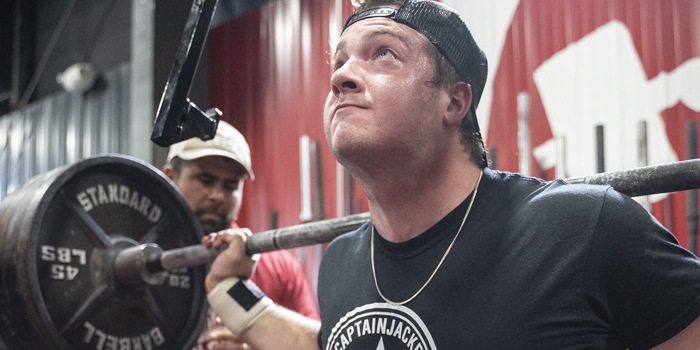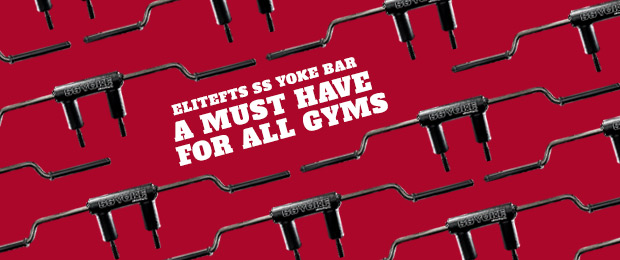
I wrote an article four years ago about finding the best squat stance for your anatomy: Find Your Perfect Squat in Five Minutes. Now I want to make an update so you continue to perfect the squat (and lifting) system.
Squat Technique
Technique doesn't automatically correct itself just because you change your squat stance. You need strength and muscles to get stronger in your squat!
If your technique is poor, you will start a compensating movement and stride the risk for muscle injuries or bad movement patterns that accomplish overtraining instead of becoming a better athlete.
Bar Speed
I have the luck of having Boris Sheiko as one of my mentors and the opportunity to talk with him about my thoughts. We were discussing bench press bar speed. He showed me a video of a Russian lifter who performed a bench press at what he described as the right speed. I felt it was a slow and solid movement that looked easy for the lifter. He said, "It is the rhythm of the barbell. It isn't slow." The bar has its own rhythm in the lift and we should not try to change it. I think the rhythm of the bar is how your muscle chain adapts and performs the muscle work.
MORE: Find the Perfect Squat in Five Minutes
The technique is then the result of the coordination in your muscle chain.
A muscle chain is the work pattern of the muscle group that performs a movement. In the bench press, for example, the work should start with the lats to initiate the movement. The pectoralis, delts, and triceps continue to lock the bar out. If the lats do not initiate the movement, the delts will compensate for it, leading to pain in the shoulders or injuries.
Think about the muscle chain as a row of domino bricks. They have to fall a certain way to spend the least amount of energy possible during the movement. It is the same with muscle movement. Yes, it's partly controlled by technique and partly controlled by unconscious behavior.
Your technique will, in time, determine your unconscious behavior. If you lift too fast or overspeed the eccentric, it is harder to affect your unconscious behavior. So, when you try to program your unconscious behavior to get a better squat, you have to make a solid movement and let every part of the muscles get involved.
If you know that you fail right above your knees on your way up in the squat, you can pause there to put more focus on that part of the muscle chain.
Eccentrics
If you are new to the squat or feel it's easy to a certain point where you lose technique (or if you have to do a 45-minute warm-up to squat), train the eccentric. Eccentric squats focus on your way down with an easy weight that'll take you six to ten seconds to get to the bottom. Lift faster on your way up. You should use 40 to 50 percent of your max with the eccentric squat. You can also do the same in the deadlift.
Many people ask for good exercises to activate the right muscles before they perform the squat. When it's time to squat, they forget everything and head for the big weights. Your goal should be the same at the beginning and end of your training session. However, many people have a pre-training purpose, a training purpose, and a post-training purpose. It's strange since it's exactly the same material you're working with all the time—your body and your muscle system.
Think about a company that starts the day with a meeting. They discuss how they should handle the customers for long-term profitability. After the meeting, they headhunt their customers to make quick money and forget about customer care. After the day finishes, they realize the customers are disappointed since they didn't get genuine help. So, the next day they have a meeting on how they should earn the trust of the customers, and then the headhunt for quick money starts again. Day after day. This company won't last long—don't let your training plan look the same.
If you're a geared lifter, fast eccentrics give you a re-bounce. But if you're a raw lifter and want to get maximum strength, you should notice the muscles work in the eccentric phase.
Recap
I think the biggest takeaway from this article shouldn't be to slow down but to gain more awareness of how you perform your lift. It isn't just up and down and about the numbers of pounds you put on the bar. Try to become one with the barbell.
Move your fucking body, not just the fucking bar!
Stefan Waltersson is a professional strength coach certified by Westside Barbell, lecturer, physiotherapist, author, personal trainer, kinesiologist, sports massage therapist, nurse assistant, and founder of Seminoff Sport & Rehab in 2004. Stefan has previously worked in neurology (Sahlgrenska University Hospital) and with researching doctors in microbiology and clinical chemistry. Check out his website.










